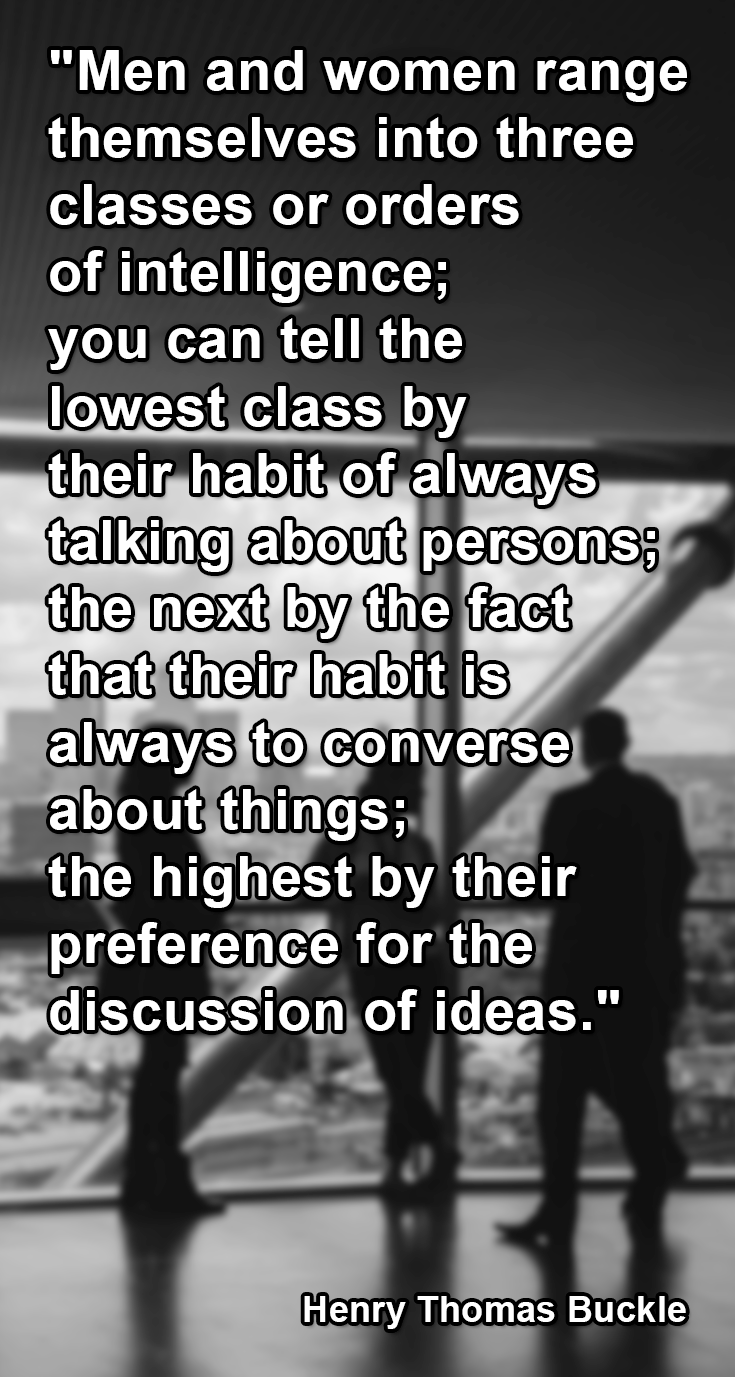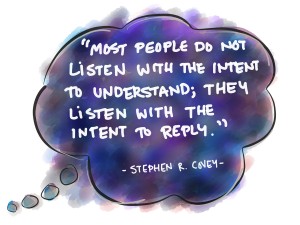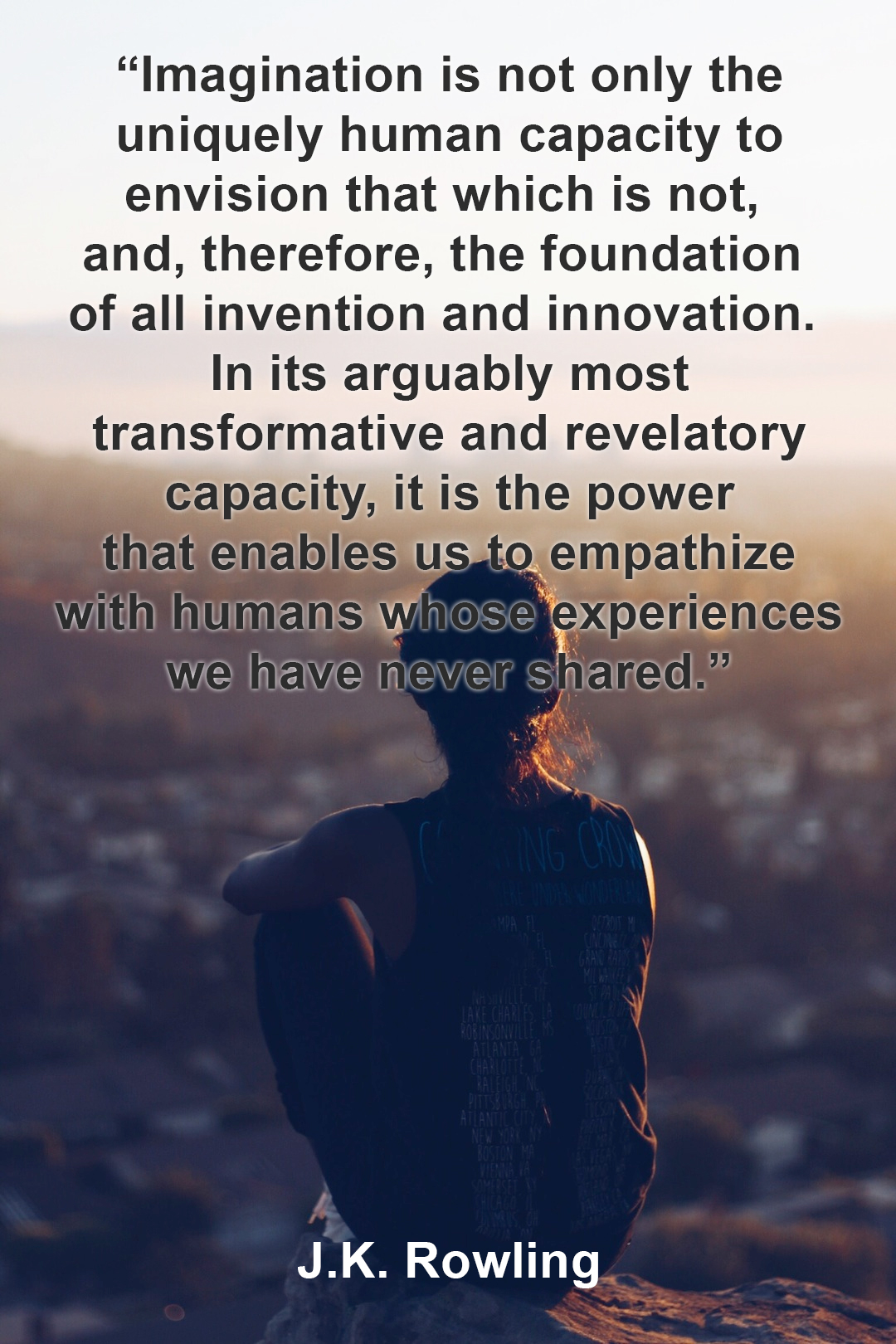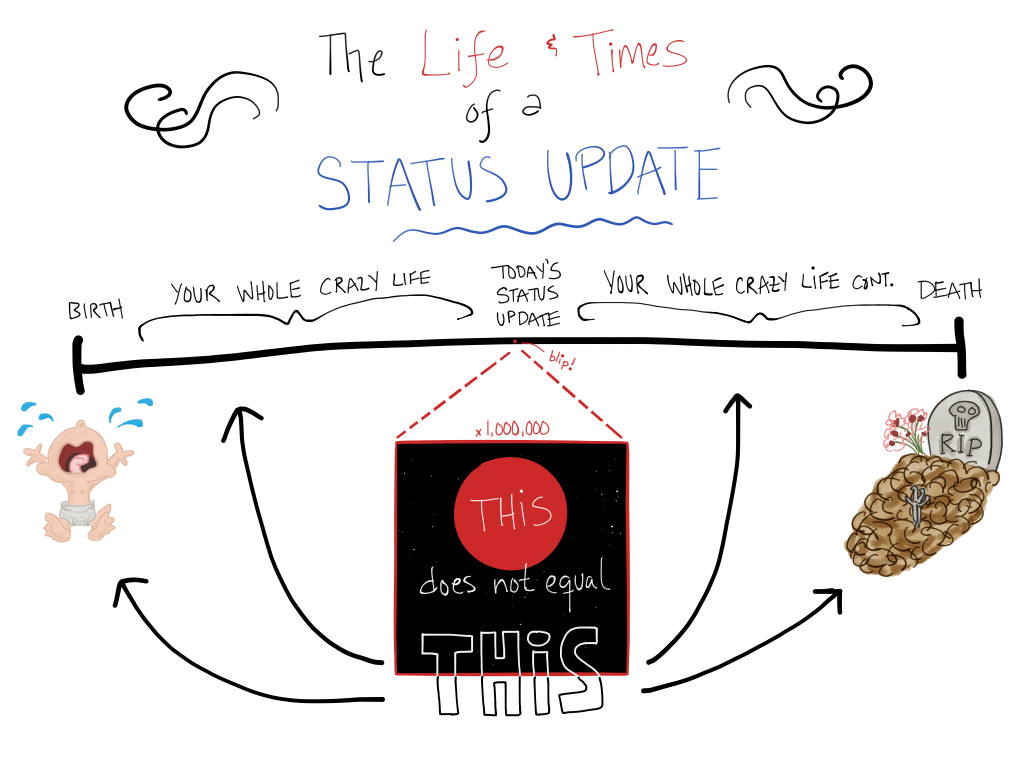Social media revolves around communicating with each other. At the same time it shows us how inept at it we are. Social sites range from blogs with comment sections like this one, to platforms like Facebook and Twitter, to media-sharing sites like YouTube and Pinterest. Mastering each of these is an art form, and there have been plenty of posts written about it.
But not this one. Instead of the “10 Things to Do if You Wanna’ Be Big” routine, I’ve decided on another approach. This article focuses on finding our humanity in and adding value to social media. I’ve written some guidelines that, after years of online shenanigans, have proven helpful to me. I don’t consider myself a master (or even close to one) of social media, so feel free to add your own insights in the comments below.
1. A single post or status does not define a person.
Humans of New York is one of the most interesting pages online. The author, Brandon Stanton, takes a person’s photo and provides a personal story to go along with it. Sometimes it’s only one sentence and sometimes it’s a multi-part story. Even though it’s only a glimpse of their life story, a mere blip, it’s almost always personal.
That’s what social media is, a series of blips in one person’s life story. Each entry is a single moment recorded and put out there for the entire world to view. Some posts are so captivating they achieve viral status. Sometimes they’re simple, happy, or sad. Sometimes they’re so aggravating and annoying that you slap yourself in the forehead. What they never are is complete. A single post will never explain all a person’s experiences, all their feelings and emotions, nor all their words and thoughts.
With that in mind, remember that…
2. Behind each comment is a real person.
Every person on social media has a name, a story, a history, and a future. Every one of them has experienced heartache and laughter, just like you. Social media statuses are a reflection of that. Having never been in another person’s head, it’s best to give them some leeway. Social media is as good for formulating ideas as it is for declaring solutions.
It’s not foolproof, but The Golden Rule is a decent standard (yes, even when you think the other person is a monkey butt). Ask yourself, “if I were this other person, how would I want to be treated? How would I want to be spoken to?” If you have misgivings, you may want to alter your approach.
Far too often our fingers, acting as the brainless digits they are, type out a “that’ll teach ’em” response, laden with emotion and fire. Later when our brain catches up and we’ve cooled off a bit, we’ve already served the vinegar. The damage is done. Being kind is much easier than damage control, and it causes far fewer problems in the end.
3. Discuss ideas, not people.
In other words, don’t be a jerk. I spend a significant amount of social media time discussing hot-button issues. It no longer surprises me when someone charges in with both fists swinging at me rather than my points. I’ve notice some things these people have in common:

- They have rarely read the entire discussion.
- They address only a small part of what I said (if any part at all) with emotionally charged, inflammatory comments. For example, on a recent Facebook thread of mine a dude said that I “needed a punch in the face.” (Without hesitating I punched myself in the face, and it magically changed everything.)
- They’re more interested in arguing and making a point than engaging in a conversation.
When people target your character in an attempt to undermine your idea, they’re committing an ad hominem logical fallacy. Calling people out on this can be helpful, inviting them to take part with civility or not at all. It doesn’t always work, but it’s worth a shot.
Name calling, threats, and smears speak with such volume they mute any valid points. One tactic to avoid this trap is not assigning characteristics or motives to people. Move past the person and discuss the idea’s validity and implementation.
4. Expect a Different Opinion
There are over 7 billion people in the world, and 319 million of them in the United States. People will disagree with you—especially on social media. Watching people react to an opposing idea is an interesting exercise in human psychology.
People become defensive and build walls to avoid cognitive dissonance and being wrong. Admitting an error that requires you to restructure your views is scary and overwhelming. It’s only natural that people avoid it, even though confronting it is beneficial.
When you’re comfortable and feel secure in your thoughts, you’re no longer progressing. Opposing ideas are opportunities to learn more, test your points, and adjust. Learn what you can, regroup, and try again. Avoid the mistake of thinking that a different opinion is a personal attack.
Sometimes what holds us back is our fear of not being able to defend our positions. It is helpful in these cases to be brief and keep the topic small. If needed, qualify your idea with words like, “I’m still learning about xyz,” or “it currently seems to me that….”
5. Comment to Listen
Social Media is busy. Threads with 1000+ comments disappear within days as people and businesses post new content. If you read through the comments most of them will be someone stating their opinion. While there’s nothing wrong with giving an opinion, the world is full of them. We could use more questions and fewer conclusions. We could use more people who can hear the message within the message—more listeners.
 It’s easy to spot the listeners in a conversation. They’re the ones who value people, interaction, and learning above being right or heard. I have a friend who is spectacular at this. Earlier this month he joined my wife and I for a black bean tostada dinner. We discussed writing, raising kids, education, technology, meditation, and tattoos. He balanced the conversation with questions and insightful comments that spoke to me. Whenever our time together ends, I feel fulfilled and understood, even if we hold different opinions. I hold deep respect for his conversation and listening skills.
It’s easy to spot the listeners in a conversation. They’re the ones who value people, interaction, and learning above being right or heard. I have a friend who is spectacular at this. Earlier this month he joined my wife and I for a black bean tostada dinner. We discussed writing, raising kids, education, technology, meditation, and tattoos. He balanced the conversation with questions and insightful comments that spoke to me. Whenever our time together ends, I feel fulfilled and understood, even if we hold different opinions. I hold deep respect for his conversation and listening skills.
6. Speak with clarity and use appropriate labels.
Perhaps one of the greatest social media woes is lazy writing. I spend half my time in threads using a Kellogg’s decoder ring deciphering what people are trying to say. No, pictographs and LOL acronyms will not earn you time in the pit of despair. They are, after all, lifesavers when trying to write a complete thought on Twitter. My point is that in our hurry to be heard, we lose track of the small details that let us be heard.
Here are some common mistakes:
- Using pronouns without defining them first. On a thread with many inputs and thoughts per comment, a reader becomes lost unless you name the nouns. Rule of thumb: Use the noun first in each new comment, even if you used it in a previous one.
- Posting huge walls of text. You’re familiar with this, right? It’s the six-inch rant without any paragraph spaces. Separate your thoughts with a blank space by using Shift + Enter.
- Not using any punctuation and letting the sentence go on and on even after the thought is complete and we’ve moved on to other topics like gumdrops rainbows and candy sprinkles why do people do this im not even sure when to breath help i’m dying!
- Not specifying your audience. With tweets, images, videos, and comments knowing who is talking to who can be difficult. If you’re replying to somebody specific, use their name so that everybody knows.
Another way to clarify your thoughts is to copy a person’s previous sentence, paste it in quotations, and type your response below it. This lets readers know to what you’re responding; it’s especially helpful when replying to longer comments.
7. Treat social media as a conversation.
The easiest way to connect with other people is to have a conversation. Conversations are give and take. If you do all the talking, the other person withers away in boredom. It’s not likely others will want to join the “conversation” either. If asked a question, respond in good faith with sincerity. Also, be willing to ask a few yourself.
Arguments are the great downfall of social media. All-too-often what could be an enlightening conversation turns into a “He said, she said, $%#@ THE WORLD!” shouting match. Rarely do you get to watch people implode, unless you’re on social media, in which case it happens all the time. Pop some popcorn, lay back, and watch the crap hit the fan.
 When either you or others engage with an air of a moral superiority, the conversation flops. If you make the other person feel like a worm, it won’t matter if your position is the right one. People are more likely to remember how you made them feel than what you said. The point is not to prove your superior intellect, but to convey ideas. Give and take. Give and take.
When either you or others engage with an air of a moral superiority, the conversation flops. If you make the other person feel like a worm, it won’t matter if your position is the right one. People are more likely to remember how you made them feel than what you said. The point is not to prove your superior intellect, but to convey ideas. Give and take. Give and take.
If you find your blood boiling and your temperature rising, take a few breaths, get up, and walk around. Do something physical to let off some steam like imagining the person’s face on a pillow and punching it taking a walk, yoga, baking, swimming, or quidditch. Taking a break has prevented me from sending more than one angry message to an unsuspecting victim. Angry messages are like the hippopotamus who flings poo all over the place, splattering itself and everything around it. Don’t be the hippo. Don’t splatter poo. Don’t send angry messages.
8. Avoid logical fallacies and admit your mistakes.
Knowing logical fallacies will not only make you a better conversationalist, it will expose you to your own biases. Sometimes pointing them out is helpful, but you might come across as a pious know-it-all, so use some tact when doing so. Learning to use them on yourself will help you better understand and support your own ideas.
Four (of many) common fallacies online are:
- The Straw Man: Misrepresenting or ignoring someone’s point to make it easier to attack. It’s like putting words into someone’s mouth.
Example: Lucas says, “I like bacon too much to ever dedicate myself to a vegan lifestyle.” Angela replies, “Why do you hate vegans?” - Slippery Slope: Assuming that one event will lead to another without probable cause, and so one must stop the first event.
 Example: Barbara says, “I want to eat five apples a day.” Jared replies, “If everyone starts eating apples, the prices will be rediculous.”
Example: Barbara says, “I want to eat five apples a day.” Jared replies, “If everyone starts eating apples, the prices will be rediculous.” - Appeal to Authority: Claiming that because someone in a position of authority says something, it must be true.
Example: Flanders says, “I sear my meats because Chef Amazing says it seals in the moisture.” (P.S. Nullius in verba. It really doesn’t.) - No True Scotsman: Defining something in a way that excludes relevant criticisms but includes the commendable.
Example: Warby says, “Cheese professionals do not like cheap cheddar cheese.” Janet replies, “I’m a cheese professional and I like cheap cheddar cheese.” Warby responds, “Well, no truecheese professional likes cheap cheddar cheese.”
Learn logical fallacies (there are many) to improve your conversation and critical thinking prowess. Knowing them, however, doesn’t make you immune to committing them. Nor does it make you immune to making other mistakes. When you’re incorrect, admit the mistake, and move on.
9. Your social media accounts are an extension of yourself.
I consider my social media accounts as an extension of my person and home, and I try to be the same person online as I am in real life. I want others to feel welcome to converse with me either through the keyboard or in person. Like most people, I’m a bit weird. I would hope that if you knew me either online or in person, you’d have a good idea of who I was. (BTW, if you’re ever in the Salt Lake City, Utah area and want to meet up, send me a message! I love meeting new people.)
Social Media has taught us that not all our relationships flourish online. Some people who we work well with in the real world can crawl under our skin on Facebook and Twitter. Have a better social media experience by recognizing which online relationships don’t work for you. It’s okay, and even healthy, to no longer sustain or pursue them.
Facebook lets you unfollow someone without unfriending them. This lets you take a break from their posts without severing the connection completely. When you’re ready, you can follow them again, or unfriend (and block) them completely.
10. Be empathetic and encouraging.
Empathy is using your imagination to view another person’s perspective and value their experience. Although it’s easier to express empathy towards like-minded people, you can also have it for those who disagree with you. Either way, putting yourself in someone else’s shoes helps engender an appropriate response.
 Empathy is a driving force behind close-knit social groups and friendships. Cultivating empathy online can be more difficult because the reader can’t use body language as an interpreter. Assume the best in people before jumping to conclusions that lead to conflict. Clarify what the writer means instead of assuming they’re an insensitive prat. Sometimes people mean well, but they lack the eloquence to express their thoughts with clarity.
Empathy is a driving force behind close-knit social groups and friendships. Cultivating empathy online can be more difficult because the reader can’t use body language as an interpreter. Assume the best in people before jumping to conclusions that lead to conflict. Clarify what the writer means instead of assuming they’re an insensitive prat. Sometimes people mean well, but they lack the eloquence to express their thoughts with clarity.
As much as I love boogery kids and fluffy kittens, I prefer weightier substance. My favorite people on social media are the ones who share meaningful content that supports and encourages the people around them. The value in social media is often found in the lengths you take to help others. Be a voice of support and understanding, one of kindness and encouragement, and stop wasting time feeding negativity.
So Now What?
Participating in social media can bring us together or build walls between us. Refuse the walls, and look for ways to expand your experience in positive ways. You have a great deal of control over your social media experience. Make the choice to be a better person and use it to form meaningful connections with the rest of humanity.
What are your thoughts?


Share what's on your mind!